|
HELMETS
New
Sallet with bevor in Helmschmied style,
circa 1480-1485.












New
Reproduction of the Henry V tournament helm,
circa 1380-1420.



















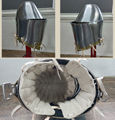
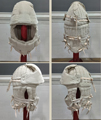
Great bascinet inspired by depictions from Altar of St George
of the Valencian school, circa 1410.


















Bascinet with klappvisier visor based on two sources:
skull on bascinet from Sion and visor on klappvisier from Marburg,
University Museum, Inv.-Nr. 185.
For the visor I added additional vent holes on left side and
divided eye slot into small rectangles for better protection.






Reproduction of the helmet from Nysa in Poland.
Equipped with a nasal guard based on the original from Amersfoort in Holland.


























Visored bascinet based on the depitc of men-at-arms from
Thouzon altarpiecie (circa 1410) in Louvre Museum.
















Visored bascinet based on helmet from Churburg CHS15.




















Sallet inspired by example from the Philadelphia Museum of Art.
Bevor inspired on Churburg CHS25 piece.
Period: 1460-1470


























Visored bascinet based on helmet from Musée de Cluny in Paris.














Helmet inspired by the Lyle bascinet from Royal Armouries in Leeds,
formerly part of Churburg armoury

















Visored bascinet based on example from Le Landeron in Switzerland
















The bascinet based on original from Burgos combined with three visors:
Loewenburg, Churburg CH16 and a plow like visor.







































Klappvisier bascinet with "keyhole" visor, c. 1390-1410
Source: bascinet Wallace Collection A74, London; visor Museo Stibbert, Florence




















The great bascinet in English style for Agincourt battle period,
circa 1415



















Klappvisier bascinet inspired by helmet and visor from
Deutsches Historisches Museum in Berlin, circa 1370-1390.


















Klappvisier bascinet inspired by helmet from Musee de Valere in Sion,
circa 1360-1380.



























Great Helm with reinforce plate for jousting,
dated for circa 1380-1400.

























Visored bascinet based on helmet A69 from Wallace Collection,
dated about 1390-1400. Heat treatment up to 34 HRC.




























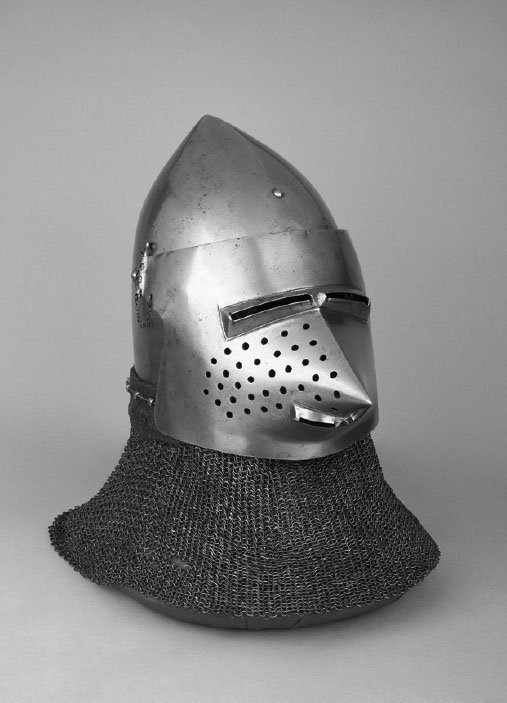
Early XV c. visored bascinet "hundsgugel" with bevor plate.
Visor based on original example from Polish Army Museum in Warsaw.
Helmet equipped with bevor and visor lock.




















Visored bascinet hundsgugel based on helmet A12 from
Kunsthistorisches Museum in Wien.
Made of high quality mild steel and quenched to 34 HRC.























Stechhelm for begin of XV c.
Made of high quality mild steel and quenched to 30 HRC.















Visored bascinet based on helmet from Musée de Cluny in Paris.
Made of high quality mild steel and quenched to 34 HRC.
Equipped with hand sewn lining and riveted mail aventail.






























Visored bascinet based on helmet CH16 from Churburg.
Made of high quality mild steel and quenched to 30 HRC
Equipped with crest for feathers
Crest and visor covered in 24 karat gold.

















Bascinet with klappvisier visor based on two sources:
skull on bascinet from Sion and visor on klappvisier from Marburg,
University Museum, Inv.-Nr. 185.
For the visor I added additional vent holes on left side and
divided eye slot into small rectangles for better protection.













Close helmet based on piece of Nuremberg origin, c. 1520, currently in Musée de l'Armée in Paris.
All made without welding from high quality mild steel of 0,3% carbon content.







































Visored bascinet with so called frogmouth visor.
Heat hardened and tempered up to 30 HRC, blackened finish.














Bascinet with side mounted klappvisier visor.
Heat hardened and tempered up to 30 HRC.











Great helm dated for half of XIV c.
Heat hardened and tempered up to 30 HRC.








Bascinet with nasal dated for half of XIV c.
Heat hardened and tempered up to 30 HRC.











Visored bascinet based on helmet CH16 from Churburg
with additional visor made in style of Wallace Collection A69.
Heat hardened and tempered up to 30 HRC.













































Visored bascinet with brass gilded visor based on helmet CH16 from Churburg.
































Klappvisier bascinet based on helmet from Deutsches Historisches Museum, dated about 1350-1370.
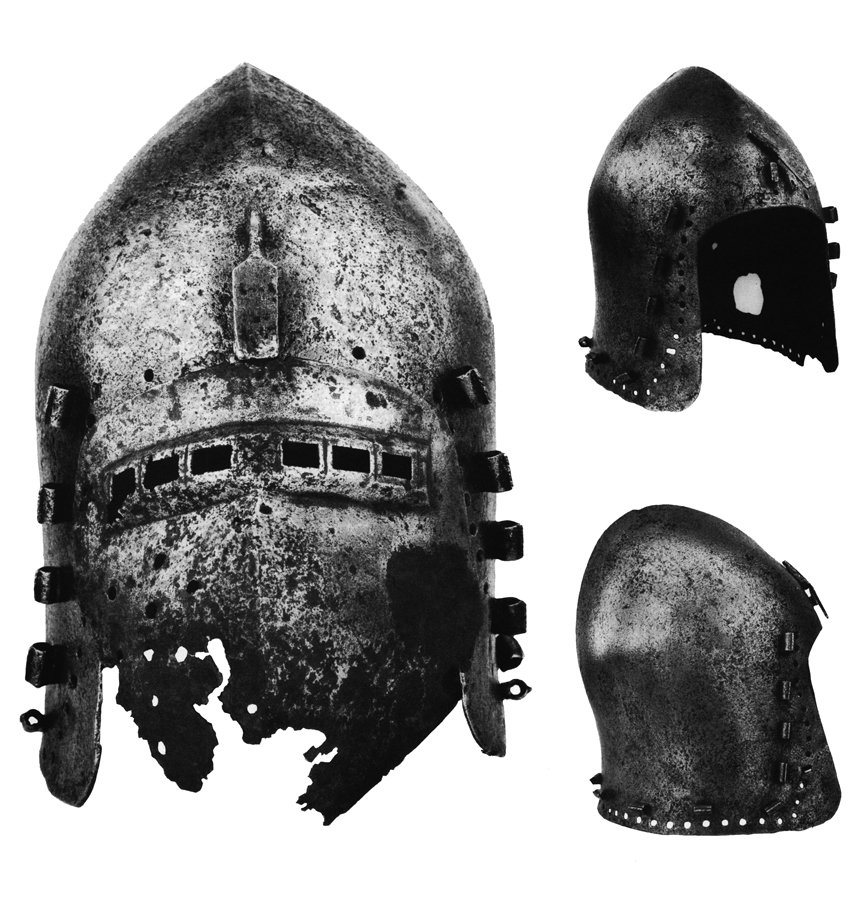





















Visored bascinet based on helmet A69 from Wallace Collection, dated about 1390-1400.

Klappvisier bascinet made from medium carbon steel.
Skull and visor raised on hot, each from one piece of steel.
Heat hardened and tempered, final hardness is 40 - 42 HRC = 392 - 416 VHP.



After heat hardening







Helmet inspired by italian iconography from second half of XIV c.
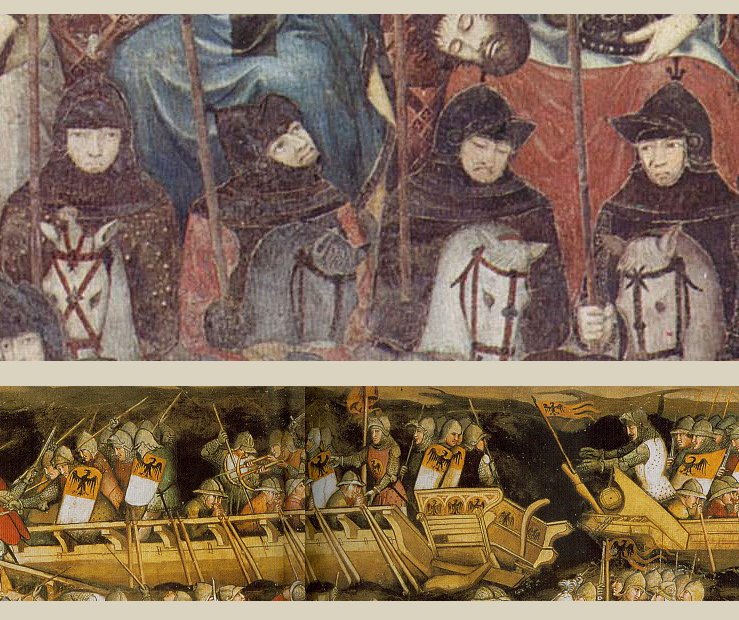
Great bascinet made from medium carbon steel.
Skull and visor raised on hot, each from one piece of steel.
Heat hardened and tempered, final hardness is 40 - 42 HRC = 392 - 416 VHP.







Great bascinet made from medium carbon steel.
Skull and visor raised on hot, each from one piece of steel.
Heat hardened and tempered, final hardness is 40 - 42 HRC = 392 - 416 VHP.















More photos during raising the helmet in section Fabrication process.
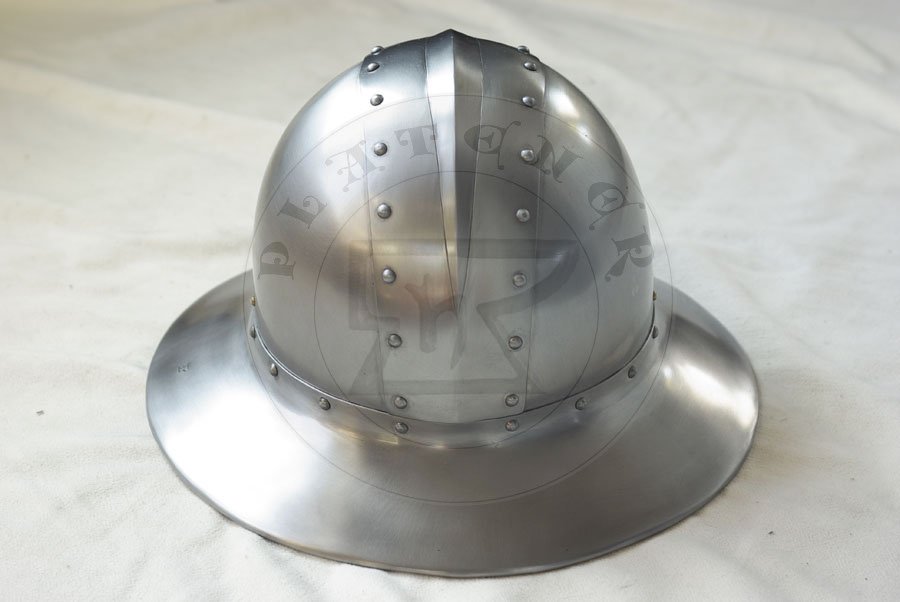
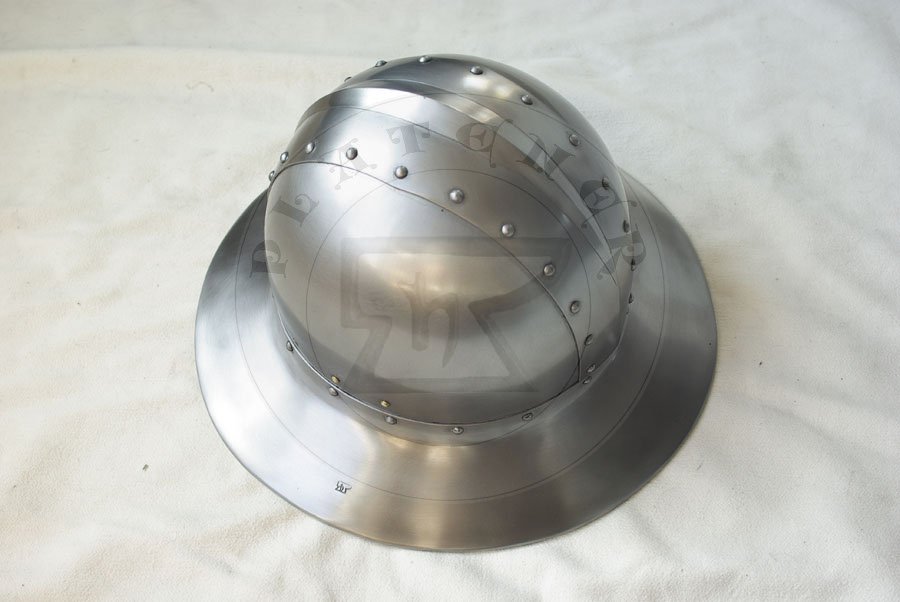

















Reconstrucion of a klappvisor bascinet from Sitten in Switzerland, 1360 c.

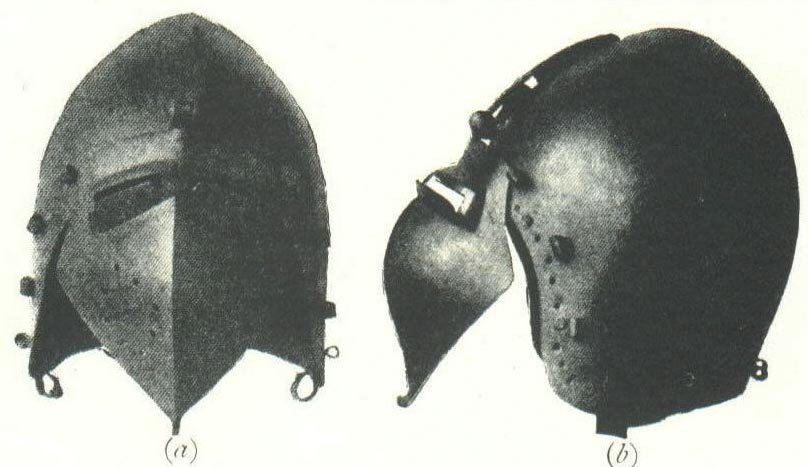




|